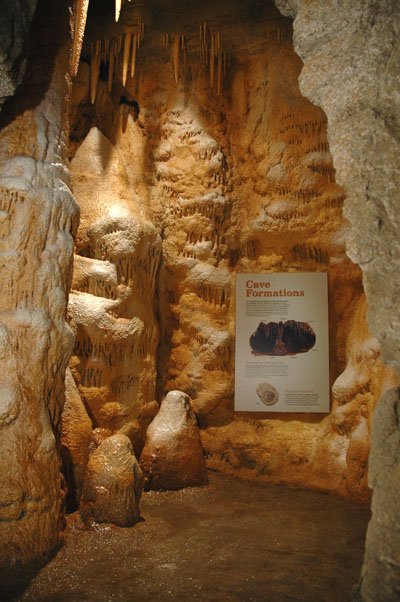
Illinois State Museum
Click on active areas for information on formations and food web.
How Did We Get This?
Karst Areas
The Rock
This is Mississippian limestone, formed about 340 million years ago, when
Illinois was covered by a shallow sea. Calcium carbonate from animal shells
and other materials built up in thick deposits on the sea floor that
compressed the layers into limestone.
The Cave
The minerals that make up limestone and dolomite are easily dissolved by carbonic
acid. Over thousands of years, slightly acidic rain, snowmelt, or groundwater
flowed through cracks in the rock and enlarged them. Along bedding plains
between rock layers, water carved tunnels. The underground waterways drained
to become air-filled caves.
Karst Cave - Monroe County, 1673
Caves are natural openings into the Earth’s
interior. They can be narrow crevices or large tunnels. Caves are formed by the action of
flowing water. Many Illinois caves have streams running through them.
Erosion and deposition go on simultaneously in caves. Water
is eroding limestone to create cave passages and it is
depositing minerals to create cave formations.
Caves provide a unique habitat. Even where no light penetrates, caves can be alive with unusual animals adapted to life there. About 250 species of animals are permanent or part-time residents of Illinois caves.